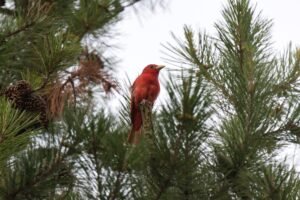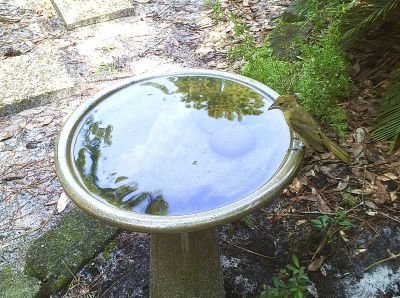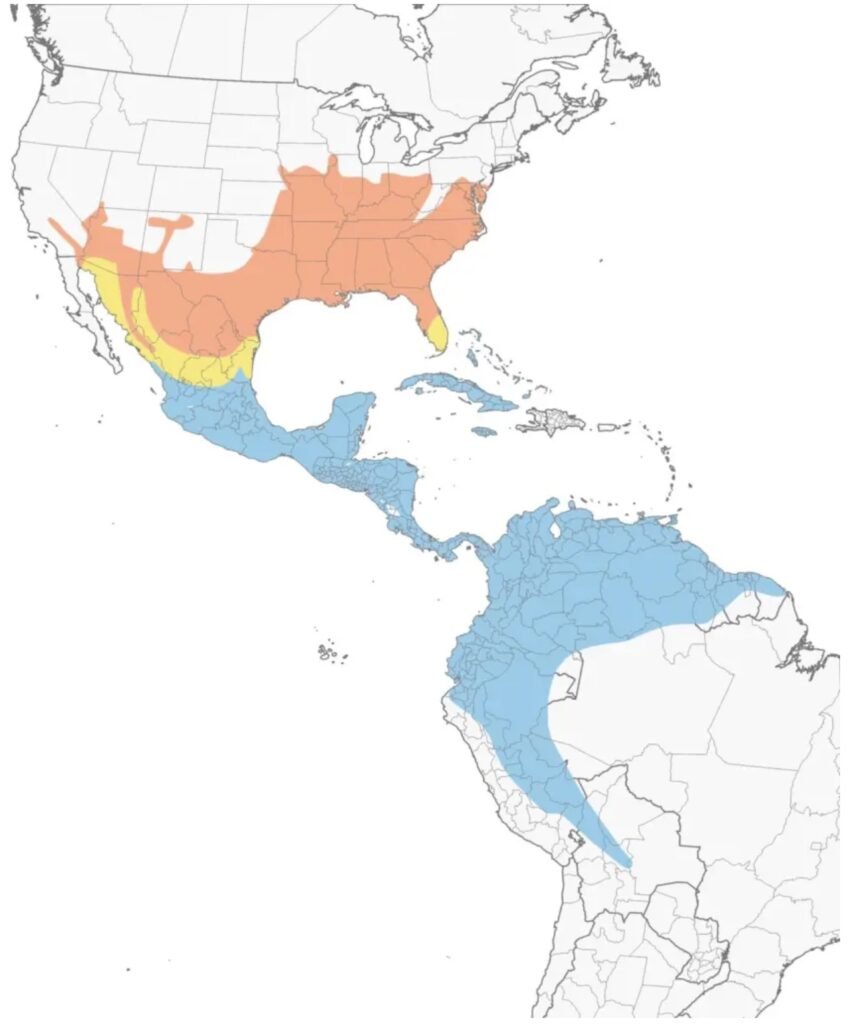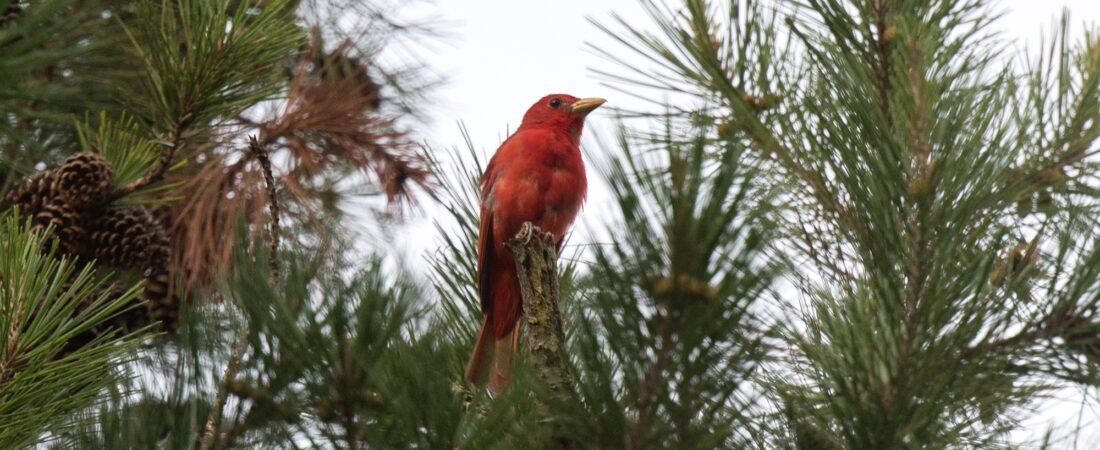If you’ve ever caught a glimpse of a flame-red bird flitting through the treetops in South Carolina’s warmer months, chances are you’ve seen the stunning Summer Tanager (Piranga rubra). This migratory songbird brings color and melody to the southeastern U.S. each spring and summer.
Characteristics
The male Summer Tanager is North America’s only entirely red bird—brilliant, unmistakable, and hard to miss. In contrast, females and juveniles wear a mustard-yellow to olive color that helps them blend into foliage.
- Size: Around 7 inches long
- Bill: Thick and slightly curved
- Song: Rich, robin-like phrases with a sharp “pit-ti-tuck”https://www.allaboutbirds.org/guide/Summer_Tanager/sounds
Nesting Season in South Carolina
In South Carolina, nesting begins in late April or early May and continues through July.
- Nest Location: Horizontal tree branches, high in the canopy
- Nest Type: Shallow cup of grasses, bark strips, and spider silk
- Eggs: 3–5 pale blue or greenish eggs, sometimes speckled
The female handles all the nest construction and incubation herself.
Behavior
Summer Tanagers are insect hunters, especially fond of wasps and bees. Their method? Snatch the insect midair, smack it against a branch to remove the stinger, then enjoy the meal.
In late summer, they also eat wild berries and fruits, helping to disperse seeds as they forage.
Migration to South Carolina
These long-distance migrants spend the winter in Central and South America, arriving in South Carolina around April. Forests, pinewoods, and mature woodlands serve as ideal breeding habitats. By September or early October, most have returned south.
Fun Fact
Nicknamed the “bee bird,” the Summer Tanager is one of the few birds that regularly eats bees, wasps, and hornets—making them a helpful backyard visitor if you’re not a fan of stinging insects!
Conservation
Currently listed as Least Concern by the IUCN, Summer Tanagers enjoy a wide breeding range. Still, they face threats from:
- Habitat loss (both in North America and their tropical wintering zones)
- Climate change
- Pesticide use, which reduces their insect food sources
What You Can Do:
Support native landscaping, minimize pesticide use, and protect local forested areas to help these birds thrive.
Attracting Summer Tanagers to Your Yard
While they don’t often visit feeders, you can make your yard more appealing by:
- Planting native berry-producing shrubs (like elderberry or mulberry)
- Maintaining tall trees or forest edges
- Avoiding insecticides that harm their prey

References:
- Cornell Lab of Ornithology. (n.d.). Summer Tanager Overview. All About Birds
- Partners in Flight. (n.d.). Summer Tanager Species Assessment.
- South Carolina Audubon. (n.d.). Birds of South Carolina: Summer Tanager.

This blog post is part of a series SIB will publish on a regular basis to feature birds seen in the area, both migratory and permanent residents. When possible we will use photographs taken by our members. Please let us know if you have any special requests of birds you would like to learn more about.
Submitted by Melanie Jerome


